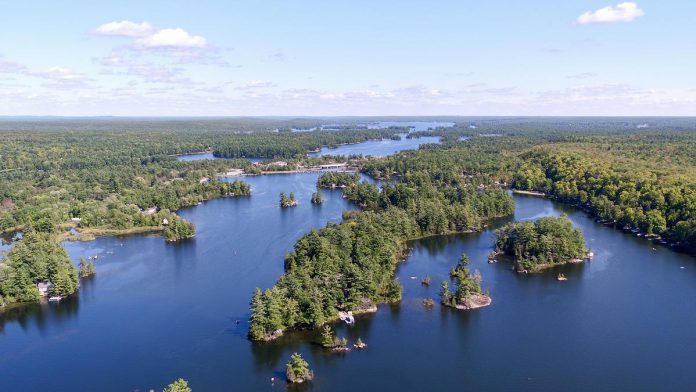
Peterborough County council has approved an amendment to the county’s official plan and zoning by-law amendment that will permit a proposed 40-site trailer park expansion on Lovesick Lake in Selwyn Township to proceed.
At its meeting on Wednesday (December 18), council received a staff report recommending the approval of an amendment that would change the land use designation on a portion of the lands from “rural” and “seasonal residential” to “trailer park”. Selwyn Township council supported the amendment at its November 12 meeting.
Located at 3340 Strickers Lane, Lovesick Lake Trailer Park currently has 160 seasonal sites and 20 overnight sites. An expansion of the park was first proposed in 2017, with applications for a 46-site expansion submitted to the county and township in 2022 and a revised application for a 40-site expansion submitted in 2023.
Several public meetings were held in 2023 and 2024 about the proposed trailer park expansion, with concerns raised by community members about the impact of the expansion on phosphorus levels in Lovesick Lake, the already-crowded public boat launch at Lock 28 on Highway 28, and increased traffic on Forest Hill Road and related safety risks.
The 2023 application had proposed access to the expanded trailer park via Forest Hill Road, which is owned and maintained by Selwyn Township, prompting community concerns about the volume and speed of traffic that would result on a road that has milted sightlines, and the potential for vehicular or pedestrian accidents.
In October, a revised proposal changed the access point to the Strickers Lane entrance off of Highway 28 to address the traffic and safety concerns.
Concerns were also expressed by the Kawartha Nishnawbe First Nation about a lack of consultation with their community. The Kawartha Nishnawbe First Nation was formed near Burleigh Falls in the early 1900s by five families from Curve Lake First Nation who had lost their Indian status and treaty rights under Canada’s enfranchisement policy, which attempted to assimilate Indigenous peoples by encouraging them to become Canadian citizens.
Although the Canadian government has not recognized Kawartha Nishnawbe First Nation as an Indigenous community, a 2002 ruling by the Ontario Court of Justice found that the people of Kawartha Nishnawbe are a distinct Mississauga First Nation community and that they hold constitutionally protected treaty rights.
Kawartha Nishnawbe First Nation community leader Nodin Webb and legal council Christopher Reid made delegations to county council at Wednesday’s meeting to reiterate their concerns about a lack of consultation with respect to their treaty rights.
The applicant’s legal counsel, Alisa R. Lombard of Lombard Law, told council that consultations with Indigenous communities with respect to treaty rights are the legal responsibility of the Canadian government, not the applicant.
Diana Keay of D.M. Wills Associates Limited, the applicant’s planner, said she has made several unsuccessful attempts to contact and consult with both Webb and Reid, and that she has “not received any formal comments from Mr. Reid or his client with respect to what their actual issues are on this file.”
One of the major concerns from some community residents involves the impact of the trailer park expansion on phosphorus pollution in Lovesick Lake, which is a small lake located west of Burleigh Falls on the Trent-Severn Waterway between Lower Buckhorn Lake and Stoney Lake.
The Lovesick Lake Association and the Committee for the Preservation of Lovesick Lake have been advocating for a lakeshore capacity assessment of Lovesick Lake.
According to the Ministry of the Environment, Conservation and Parks (MECP), Lovesick Lake is designated as a “Policy 2” lake, which means that water quality in the lake does not meet the provincial water quality objectives and “shall not be further degraded and all practical measures shall be undertaken to upgrade the water quality to the objectives.”
The staff report presented to council states that a design brief and phosphorus impact assessment submitted to MECP in support of an application for environmental compliance approval (ECA) found that “the proposed communal servicing system (wastewater treatment for the additional sites) will produce lower phosphorus loading to the lake than what currently exists.”
“Given that the ministry is monitoring lake water quality and has issued the ECA knowing that it is a Policy 2 receiver, the planning department is of the opinion that the development will not negatively affect lake water quality,” the report states.


























